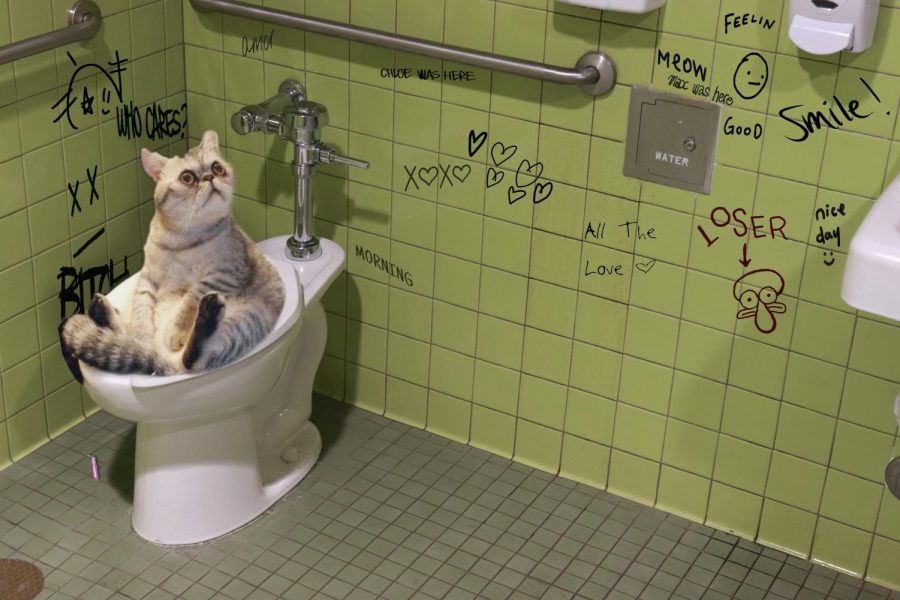What are your opinions regarding Don’t flush cat feces down the toilet?

Introduction
As cat owners, it's important to be mindful of exactly how we throw away our feline close friends' waste. While it might appear practical to flush cat poop down the commode, this technique can have damaging repercussions for both the environment and human wellness.
Alternatives to Flushing
The good news is, there are much safer and much more liable methods to get rid of cat poop. Take into consideration the complying with choices:
1. Scoop and Dispose in Trash
The most common technique of getting rid of pet cat poop is to scoop it into an eco-friendly bag and throw it in the garbage. Be sure to utilize a dedicated trash inside story and deal with the waste without delay.
2. Use Biodegradable Litter
Choose eco-friendly cat litter made from products such as corn or wheat. These clutters are eco-friendly and can be safely thrown away in the garbage.
3. Hide in the Yard
If you have a yard, consider burying feline waste in an assigned location far from veggie yards and water resources. Make sure to dig deep sufficient to stop contamination of groundwater.
4. Mount a Pet Waste Disposal System
Buy a family pet garbage disposal system particularly created for feline waste. These systems utilize enzymes to break down the waste, decreasing odor and ecological influence.
Health and wellness Risks
In addition to environmental problems, purging feline waste can also pose wellness dangers to humans. Pet cat feces may include Toxoplasma gondii, a parasite that can create toxoplasmosis-- a potentially extreme disease, particularly for expecting females and individuals with weakened body immune systems.
Ecological Impact
Flushing feline poop presents damaging virus and parasites right into the water supply, positioning a substantial risk to water ecological communities. These contaminants can negatively affect aquatic life and concession water top quality.
Conclusion
Responsible animal ownership prolongs past supplying food and sanctuary-- it additionally entails correct waste monitoring. By avoiding purging feline poop down the bathroom and selecting alternate disposal techniques, we can reduce our environmental impact and shield human wellness.
Why Can’t I Flush Cat Poop?
It Spreads a Parasite
Cats are frequently infected with a parasite called toxoplasma gondii. The parasite causes an infection called toxoplasmosis. It is usually harmless to cats. The parasite only uses cat poop as a host for its eggs. Otherwise, the cat’s immune system usually keeps the infection at low enough levels to maintain its own health. But it does not stop the develop of eggs. These eggs are tiny and surprisingly tough. They may survive for a year before they begin to grow. But that’s the problem.
Our wastewater system is not designed to deal with toxoplasmosis eggs. Instead, most eggs will flush from your toilet into sewers and wastewater management plants. After the sewage is treated for many other harmful things in it, it is typically released into local rivers, lakes, or oceans. Here, the toxoplasmosis eggs can find new hosts, including starfish, crabs, otters, and many other wildlife. For many, this is a significant risk to their health. Toxoplasmosis can also end up infecting water sources that are important for agriculture, which means our deer, pigs, and sheep can get infected too.
Is There Risk to Humans?
There can be a risk to human life from flushing cat poop down the toilet. If you do so, the parasites from your cat’s poop can end up in shellfish, game animals, or livestock. If this meat is then served raw or undercooked, the people who eat it can get sick.
In fact, according to the CDC, 40 million people in the United States are infected with toxoplasma gondii. They get it from exposure to infected seafood, or from some kind of cat poop contamination, like drinking from a stream that is contaminated or touching anything that has come into contact with cat poop. That includes just cleaning a cat litter box.
Most people who get infected with these parasites will not develop any symptoms. However, for pregnant women or for those with compromised immune systems, the parasite can cause severe health problems.
How to Handle Cat Poop
The best way to handle cat poop is actually to clean the box more often. The eggs that the parasite sheds will not become active until one to five days after the cat poops. That means that if you clean daily, you’re much less likely to come into direct contact with infectious eggs.
That said, always dispose of cat poop in the garbage and not down the toilet. Wash your hands before and after you clean the litter box, and bring the bag of poop right outside to your garbage bins.
https://trenchlesssolutionsusa.com/why-cant-i-flush-cat-poop/

As a passionate person who reads about Don’t flush cat feces down the toilet, I was thinking sharing that post was smart. Are you aware of someone else who is serious about the subject? Why not share it. I praise you for your time. Come back soon.
Information
Comments on “The Dangers of Flushing Cat Poop Down Your Toilet - Advice for Better Handling”